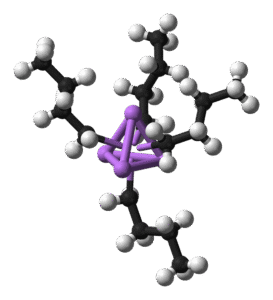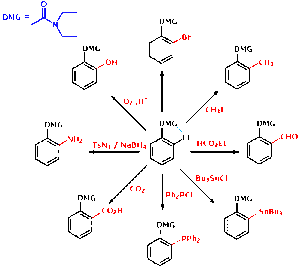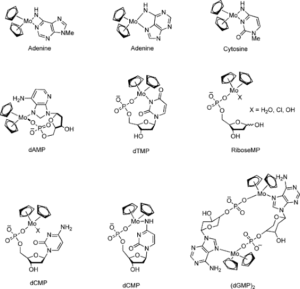Back to: Organic Chemistry 300 Level
Welcome to class!
Hello, my brilliant chemist-in-the-making! Today’s topic takes us into a fascinating meeting point between metals and organic chemistry — Organometallic Chemistry. By the end of this lesson, you’ll see how compounds that contain both carbon and metal atoms have transformed industries, from agriculture to medicine, and why they are a powerful part of a chemist’s toolkit.
Organometallic Chemistry
Meaning of Organometallic Compounds

Organometallic compounds are substances that have at least one bond between a carbon atom of an organic group and a metal atom. These metals can be main group metals like lithium, magnesium, or aluminium, or transition metals like iron, nickel, and platinum.
Types of Organometallic Compounds
Main group organometallics: Examples include organolithium (R–Li) and organomagnesium compounds (Grignard reagents, R–Mg–X).
Transition metal organometallics: Examples include ferrocene (Fe bonded to cyclopentadienyl rings) and Wilkinson’s catalyst (Rh complex).
Metalloids in organometallics: Compounds with elements like boron or silicon bonded to carbon, e.g., organoboranes and organosilanes.
Bonding in Organometallic Compounds
Bonding can be covalent, ionic, or involve coordination between the metal and carbon. In transition metal complexes, bonding often involves both sigma donation from the carbon and pi-backbonding from the metal to carbon-based ligands.

Preparation of Organometallic Compounds
Reaction of alkyl halides with reactive metals like magnesium to give Grignard reagents.
Direct reaction of metals with organic halides for organolithium compounds.
Complex formation by ligand substitution or oxidative addition in transition metal complexes.
Properties
Many organometallic compounds are highly reactive with water and oxygen, requiring inert atmosphere handling.
They can be solids, liquids, or volatile substances depending on the metal and organic group.
Reactivity and Applications
Nucleophilicity: Many organometallics act as strong nucleophiles, attacking electrophiles like carbonyl compounds to form alcohols.
Catalysis: Transition metal organometallics serve as catalysts in hydrogenation, polymerisation, and cross-coupling reactions.
Industrial uses: Grignard reagents are used to produce alcohols; Ziegler–Natta catalysts (Ti-based organometallics) are essential for making polyethylene and polypropylene used in packaging across Nigeria.
Medicinal applications: Certain platinum complexes like cisplatin are used in cancer treatment.
Organometallics in the Nigerian Context
Catalysts in the petrochemical industry for producing plastics and fuels.
Use in agricultural chemical synthesis for making pesticides and herbicides.
Applications in material science for developing more durable construction polymers.

When bromobenzene reacts with magnesium in dry ether, phenylmagnesium bromide (a Grignard reagent) is formed. This reagent can then react with formaldehyde to yield benzyl alcohol after hydrolysis.
Summary
- Organometallic compounds contain a direct carbon–metal bond.
- They can be classified into main group, transition metal, and metalloid organometallics.
- Preparation methods include reactions of alkyl halides with reactive metals and coordination complex formation.
- They have unique properties and high reactivity, often requiring inert atmosphere handling.
- Applications range from catalysis to pharmaceuticals, plastics, and agrochemicals.
Evaluation
- Define an organometallic compound and give one example.
- What is the general formula for a Grignard reagent?
- Name one important organometallic catalyst used in polymer production.
- Why must most organometallic compounds be handled under inert conditions?
- Mention one application of organometallic chemistry in Nigeria’s petrochemical industry.
You’re learning how metals and organic molecules work together to create compounds that power industries and innovations worldwide. With Afrilearn, you’re building skills that connect chemistry to real-world progress in Nigeria and beyond.
